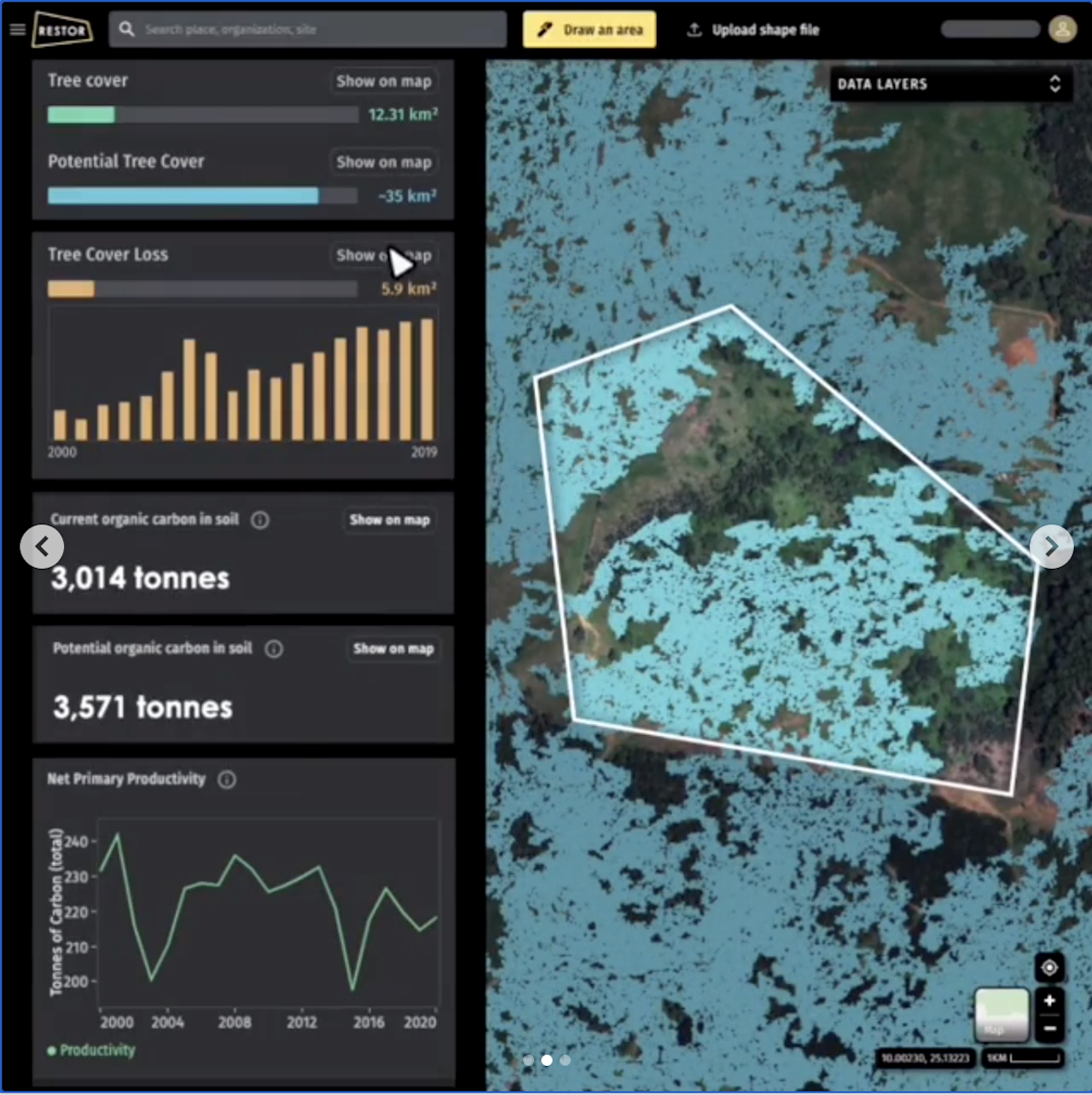Ecosystem restoration plays an important role in protecting the environment and achieving climate mitigation goals as it can potentially decrease global carbon emissions by 30%. Ecosystem restoration, as the name suggests, is the process of recovering degraded ecological systems such as land, lakes and oceans so that they can serve the needs of society. It is important to have an idea of the restoration potential of an area before starting the process of restoration. In order to make this data more accessible to restoration practitioners or anyone really, Google has collaborated with Crowther Lab to create an open data platform called Restor that can be accessed by anyone interested in looking up the restoration potential or simply learning about the ecology of an area.
Google announced the launch of this new platform on its blog earlier this week on October 12th. This project was publicly announced first in 2020 at the TED Countdown event by Dr. Thomas Crowther, who formed the Crowther Lab at ETH Zurich and is a track tenured assistant professor there. The team at the Crowther Lab wanted to create this platform so that important ecological data such as tree cover, local biodiversity, soil pH, annual rainfall could be easily accessible and consolidated on one platform.
The simple user interface allows anyone to easily access data for an area by outlining an area on the map. Since it is an open data platform, Restor also allows people to contribute by creating an account and adding their own data and insights from projects thus becoming a part of the open data community. People can also look up restoration projects around the world and support them through donations.
Restor aims to aid ecosystem restoration projects around the world and hopes by making data more accessible, more people can support and participate in the process.
Written by Hanyia Ahmed, Class of 2022

